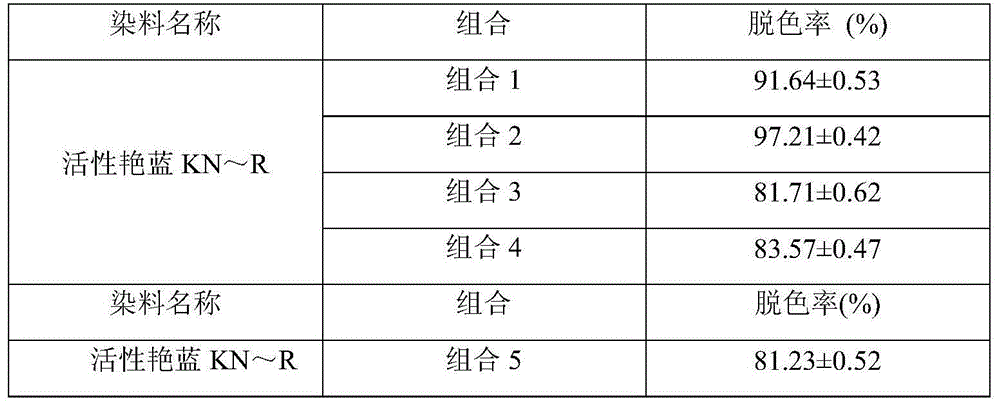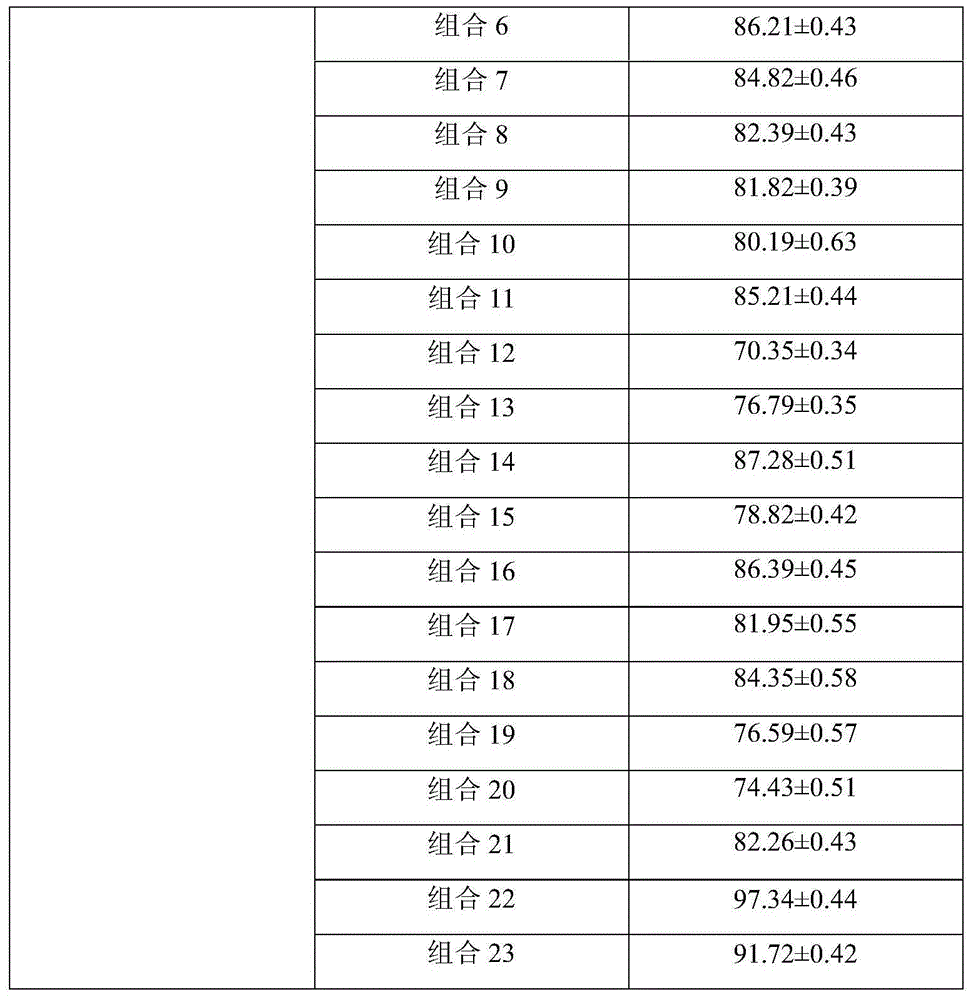Method for decolorizing printing and dyeing wastewater by adopting co-immobilized white-rot fungi
A technology for white rot fungi, printing and dyeing wastewater, applied in chemical instruments and methods, textile industry wastewater treatment, water pollutants, etc., can solve the problems of low biodegradability, deep color of printing and dyeing wastewater, and high COD, and achieve a complete degree of mineralization. , good effect, high decolorization efficiency
- Summary
- Abstract
- Description
- Claims
- Application Information
AI Technical Summary
Problems solved by technology
Method used
Image
Examples
Embodiment 1
[0014] Comparison of different co-immobilization carriers of embodiment 1
[0015] 1) Preparation of immobilized materials: Take polyurethane foam, nylon cloth, porous ceramsite, polyester fiber, and metal steel wool balls, soak them in distilled water, wash them, dry them, and store them.
[0016] 2) Preparation of white rot fungus seed liquid: white rot fungus Pleurotus eryngii (Pleurotus eryngii ~Co007 ) inoculated in the sterilized liquid medium, cultured with shaking at 25° C. to 28° C. for 3 to 5 days, and used as seed liquid for later use.
[0017] 3) Preparation of immobilized white-rot fungus: preparing a liquid medium, and adding the immobilized carrier into it according to 5% of the total volume of the medium. The prepared seed solution is inserted into the white rot fungus culture system according to 10% of the medium volume, and cultivated at 28°C and 150r / min for 5-7 days, and the immobilized bacteria are obtained after the mycelium covers the immobilized materi...
Embodiment 2
[0022] The determination of embodiment 2 co-solidification white rot fungus
[0023] 1) Preparation of white rot fungus seed solution: Pleurotus eryngii ~Co007 ), Pleurotus ostreatus, Coriolus versicolor, Phanerochaete chrysosporuim, Bjerkandera adusta, Schizophyllum commune, and Versicolor (Pycnoporus cinnabarinus) 7 kinds of white rot fungi were inoculated in the sterilized liquid medium, cultured with shaking at 25°C-28°C for 3-5 days, and used as seed liquid.
[0024] 2) Preparation of immobilized material: make polyurethane foam 1cm 3 ~2cm 3 Cube, sphere, polyhedron, soak in distilled water, wash, dry and save.
[0025] 3) Preparation of immobilized white-rot fungus: prepare a liquid medium, add polyurethane foam to it according to 5% of the total volume of the medium, and sterilize it for later use. Insert the prepared seed liquids of different white-rot fungi into the liquid medium with immobilized carrier (the ratio of white-rot fungi is not limited to each other) ...
Embodiment 3
[0035] Example 3 Repeated decolorization of dyes by co-immobilized white rot fungi
[0036] Pleurotus eryngii ~Co007 ) and Coriolus versicolor (Coriolus versicolor) were inoculated into the sterilized liquid medium, cultured with shaking at 25°C-28°C for 3-5 days, and used as seed liquid for later use. Set the volume to 1cm 3 ~2cm 3 Polyhedral metal steel wool balls, soaked in distilled water, washed and dried. To prepare a liquid medium, add metal steel wool balls to it according to 20% of the total volume of the medium, and sterilize it for later use. Put the prepared seed solution of different white rot fungi into the liquid medium with immobilized carrier according to 15% of the medium volume, and cultivate at 28°C and 150r / min for 5-7 days, until the mycelium is covered and fixed Immobilized bacteria were obtained after materialization.
[0037] The co-immobilized fungal cells prepared above were used for repeated degradation and decolorization of different printing ...
PUM
| Property | Measurement | Unit |
|---|---|---|
| decolorization rate | aaaaa | aaaaa |
Abstract
Description
Claims
Application Information
 Login to View More
Login to View More - R&D
- Intellectual Property
- Life Sciences
- Materials
- Tech Scout
- Unparalleled Data Quality
- Higher Quality Content
- 60% Fewer Hallucinations
Browse by: Latest US Patents, China's latest patents, Technical Efficacy Thesaurus, Application Domain, Technology Topic, Popular Technical Reports.
© 2025 PatSnap. All rights reserved.Legal|Privacy policy|Modern Slavery Act Transparency Statement|Sitemap|About US| Contact US: help@patsnap.com



